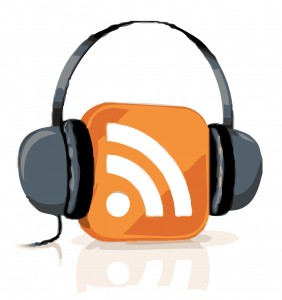Hey everyone,
This week we learned
about podcasts, which are kind of like a radio shows except you can listen to
them at a time that is best for you. With busy schedules this is a great
feature because you never have to miss you favourite podcast. After exploring
what podcasts are I had the chance to play around with SoundCloud and record
my own. SoundCloud was a very easy tool to use; it allowed me to record and
upload my podcast with ease. All you needed is an email to sign up, a
microphone and a computer with flash player installed, best of all it was free
to use. You can click here for my first podcast and digital technologies.
 |
Bookry (2013) Connect your ebook with SoundCloud.
Retrieved from: http://blog.bookry.com/?cat=213 |
I was amazed at how
many podcasts there are out there, there is a podcast for every topic you can
think of. Podcasting along with vodcasting (podcast with static visuals,
animation or video) give you a new creative way to collaborate. Although they
may seem a little intimidating at first they are just a modification on a tool
we are already familiar with. The Cochrane Library explains how podcasts are
actually just Really Simple Syndications (or RSS) which we have all used
extensively through our sites of choice, mine being Feedly. I think that
podcasts can be very beneficial in educational setting for collaboration, and enhancing
digital literacy. However personally this will not be a tool that I will be
adding to my PLE. Although I do see the benefit in the tool, I feel that I have
other tools that contribute to my learning and collaboration more effectively.
 |
Martina, N. (2012) Three Ways to Feed Your Creative Brain
Retrieved from: http://blog.ketchum.com/three-podcasts-to-feed-your-creative-brain/ |
Since podcast are
original creative works it is important that if you chose to use this tool, or
any other creative tool (including blogging) you are aware of how to protect
your own artistic rights. There is one really simple way to do this. Place a
creative commons license on your work. In doing this you can let everyone in
the digital world know the intended purpose of your creative works. You can
choose if you want your work to be remixed, if it can be used in commercial
settings. You can click here to make your own creative commons license, or here
to learn more about what these licences do. With so many individuals having
access to the internet you want to make sure that you are getting credit for
the work you are producing and that it is being used in ways which you
intended.
This week I chose to share a podcast from my Feedly reader about their rise in popularity, and how advertisers are taking advantage of it.

This work is licensed under a
Creative Commons Attribution-NonCommercial 4.0 International License.



No comments:
Post a Comment